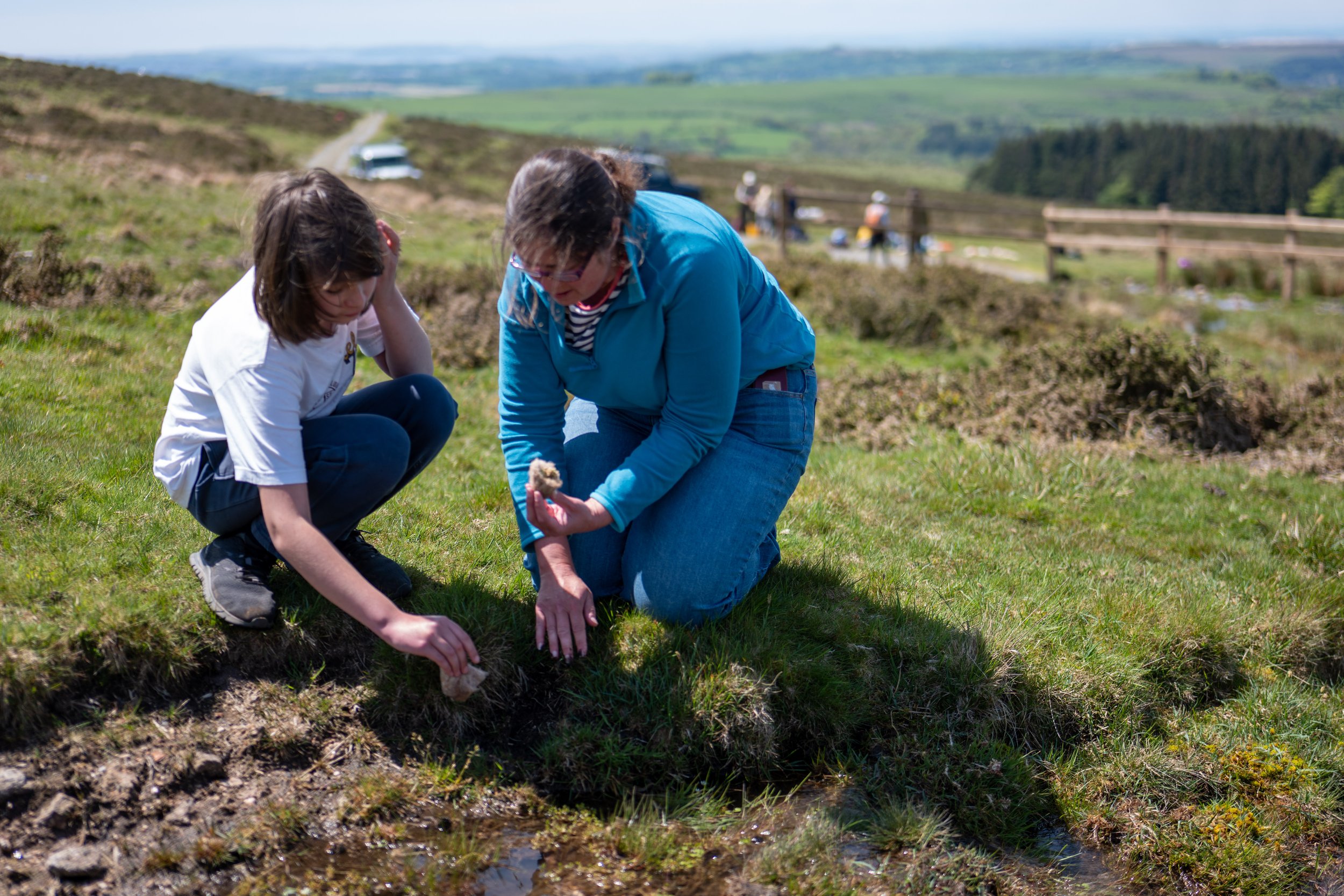Getting Creative on Harford Moor, Dartmoor
A day to explore, restore and celebrate the power of peatlands to reduce the impact of climate change.
“ We love being asked to work in a creative and positive way to encourage people to think about how they could make a brighter, greener future. Our project, How to Bury the Giant, recognises the amazing role of tiny mosses in alleviating climate change; like mosses, we could all individually do something small, but together we make a big difference.”
Local communities and people gathered on Dartmoor to take part in an event to share knowledge about how peatlands can be managed and restored to hold carbon and support biodiversity in the face of climate change.
The event on May 14 was led by Dartmoor National Park’s Headwaters project, the Foundation for Common Land and Art and Energy.
The day of creative restoration included planting sphagnum moss nests in a newly restored mire, making a ‘moss’ carpet using reused wool sewn onto a felted wool carpet sourced from local Dartmoor sheep, or simply sitting quietly to draw or paint the Dartmoor landscape, reflecting on what was learnt.
Peatlands are our most important terrestrial carbon store; they slow the flow of potential flooding waters, they are places of amazing biodiversity and rich ecology – but and more than 80% are at risk in UK. Together, everyone shared the reasons why there is a need to regenerate peat forming habitats and how to do it, by holding back water and keeping energy underground.
The event also celebrated the work of land managers, the role of common land, Dartmoor’s cultural heritage and the special sphagnum mosses that protect and form peat, absorbing tons of carbon and holding thousands of litres of water every year.
The vital role that peatlands play at a time of climate change is recognised and Dartmoor, as a carbon rich landscape, is an area where collaborative community led approach may add momentum to change how they are viewed, used and managed.
Continuing to engage in creative action and celebration, we will be encouraging people to look closely at the land and water management, notice the role of tiny mosses and make a difference to the places that are currently being restored. Through this work we will be inspiring further hopeful events and activities to address the Climate and Ecological Emergency and the green energy systems that nature provides.
“Commons can look untouched and free from intervention. So, it was great that so many people came and learned how it’s been shaped by the action of commoners over centuries. It’s led to land that is vital for nature, archaeology, climate, wetlands, trees and access, alongside livestock production. And, as its open access land, we all have the right to enjoy it, on foot.”
“This provided a fantastic opportunity to share the work we are doing to restore and protect these incredibly valuable habitats for current and future generations. It was so uplifting as a project officer to show the work we are doing and freely share our knowledge with people in a way that was fun and celebratory.”
Press info:
Funders – Dartmoor National Park, Environment Agency, Devon Environment Foundation, Foundation for Common Land,
Contacts:
Dartmoor Headwaters Project: Angelique McBride amcbride@darmoor.gov.uk 07912 470761
Foundation for Common Land, Our Upland Common Land Project: Tamsin Thomas tamsin@foundationforcommonland.org.uk
Art and Energy: Naomi Wright naomi@artandenergy.org


